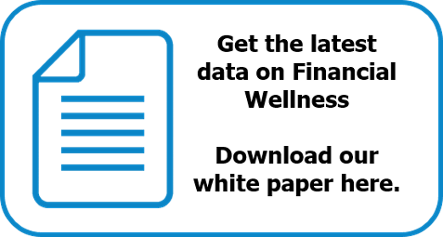While Financial Wellness seems to be one of the most popular trending topics among employee benefits and retirement plan professionals, how does this concept play into the big picture of overall "wellness"? In this New Frontier of Wellness series, AFS 401(k) Advisor, Alex Assaley uses his expertise and experience to explain how Financial Wellness programs are impacting people, why employers should consider them, and how to implement Financial Wellness for your own employees.
In Part II, Alex discusses the initial steps organizations should consider before getting their Financial Wellness program up and running to ensure it's successful.
Last month, we kicked off a blog series on Financial Wellness with my exploration into Why You Should Consider a Financial Wellness Program. This installment centers on where to start when creating a successful financial wellness program. I will walk through the initial planning steps, what questions you and others in your organization will have to ask and the importance of employee feedback in getting this type of program off the ground. You and your Benefits Committee should review use these points as you begin the process to develop and deliver a Financial Wellness (FW) program that provides measurable value to your employees and a tangible benefit to your organization.
Initial considerations: Commitment to delivering the financial wellness program
The first step of an FW program can feel like a chicken-or-the-egg situation. In order to determine the resources and capital you will need, you have to know what program you are delivering. In turn, you need to also know what resources and capital you have available to use. We will address this more closely further along the way.
Ultimately, as you are meeting with your retirement, medical, and other benefit Committee(s) and service providers, you will likely understand if there are areas in which your employees could be "doing better". Even the "best" organizations, are continually looking at ways to enhance their total benefits package for employees in order to attract, retain, and reward the high-quality people you have hired in order to drive greater productivity and success for the organization. While we recommend taking the time to gather information directly from your employees, you will initially be able to understand some macro-level trends and goals based on the performance and usage metrics of your current retirement and benefits plans This could include participation rates, savings rates, “retirement readiness/ replacement ratios,” loan and hardship withdrawal usage, and informal employee feedback on your retirement benefits.
As you identify some "surface level" areas for improvement and you believe that an FW program could be a big win, you want to consider the outlay of time and resources by your team. Ask yourself:
- Who will be responsible for this program?
- Who will be involved as decision-makers and implementers of the program?
- How much time will be spent on the program by this team - perhaps, measure this by hours per week or month?
- What other projects are we working on and will this program be disruptive, additive, or nominal to the completion of other projects?
How much will your FW program cost? It's not a guarantee, but the best FW programs will add additional cost to your employee benefits budget. You know all of the sayings about being penny-wise and how you pay for what you get, and these certainly apply to this conversation as well. With that in mind, there are a lot of ways to be cost-efficient and conscience when creating and implementing your FW program. A few areas to consider:
- Program technology: Is your FW program going to have an app, a web-based platform, and/or be accessible on your network? Technology can definitely add value to an FW program, but it’s not a necessity.
- Additional benefits: Will you be providing additional, new benefits to employees? This could be added healthcare premium coverage, wellness classes and memberships, financial planning services or software, cash bonuses, or added PTO. There is a lot of flexibility here and unique ways that you can provide benefits that incentivize your employees to make better decisions for their financial and physical well-being.
- Outside experts and consultants: Hiring an independent expert can both enhance your FW offering and help in sharing the workload of creating and managing such a program. If you determine you need an outside consultant, there are some important details to consider. Here are some questions to ask outside service providers:
- Do they provide these services? If so, how extensive are they?
- What is the scope of their expertise?
- What other companies have they worked with and what was the outcome/current result of those FW programs?
If you already use an outside adviser for other parts of your benefits, they may be able to offer financial wellness services as well. Be wary of third-party firms who will come in and provide this service "for free". Usually, if not always, this means they are going to get compensated in some way from your organization or your employees - potentially, by soliciting and selling products and services to your staff. You will want to be very careful since, as the employer and/or fiduciary, this is a benefit you are providing and could be construed as something that is endorsed or sponsored by the company. Besides looking at your current service providers, also survey the local, regional, and national marketplace. You will most likely want to go through a formal RFP process or at least a simplistic proposal/interview process with a few firms.
Ensuring that your leadership will champion the program: Once your organization has given the program the "green light," you should have a budget, and a general consensus on what you would like to deliver. The most successful benefits programs are the result of a strong commitment from the organization and its leaders. If your organization's CEO, senior executives, and other centers of influence within the organization are verbally promoting and participating in the program, the employee base will follow and engage too.
Developing your program: Listen and learn from your employees
You know a lot about your employees, but there are probably a lot of things they aren’t sharing with you directly when it comes to their short-, medium-, and long-term financial goals, needs, and challenges. Additionally, it is common that their personal financial picture and aspirations are private information which they don't want to share directly with you. Nonetheless, most employees still expect their employer to help them manage their financial future and offer benefits to navigate this course. A 2015 Gallup poll found that more than 80% of employees say they would participate in a financial wellness program if their employer offered, 67% of employees think they lack the knowledge to make sound financial decisions, and 40% want help from their employer in achieving financial security.
With that in mind, get both formal and informal input from employees.
For us, the first step is to offer a Financial Wellness and Benefits Survey to employees. To overcome the hurdle of employee privacy, consider using a third-party provider to create the survey and collect responses. Also, allow all responses to be anonymous. The survey should be simple enough that you can get high engagement and completion rates from your employee base, yet provide enough detail and opportunity for clarification that your team will be able to identify and segment specific areas of focus and topics for the FW program. Surveying should be used throughout the program in order to continually collect input from employees.
You may also consider putting together an FW sub-committee or task force. This group's goal will be to provide feedback on various topics, ideas, and strategies for the program. They can also serve as a both a "champion," promoting the program to their peers, colleagues, and direct reports in the organization, and as a "conduit," to share honest and critical feedback from employees that might not show up on surveys. I would keep this group to 7 or less employees to ensure the practicality of 1) managing the group, 2) coordinating calendars, and 3) respecting other projects. 1 or 2 people from your Benefits Committee or HR team should participate and the remaining members would be carefully selected from the employee population to gain a good cross section of your overall demographic.
In the final installment of our New Frontier of Wellness Series, Alex will walk you through the final steps to take to ensure you're implementing an FW program successfully and avoiding common pitfalls.

